Sexual Reproduction in Flowering Plants
1/79
There's no tags or description
Looks like no tags are added yet.
Name | Mastery | Learn | Test | Matching | Spaced |
|---|
No study sessions yet.
80 Terms
Asexual reproduction (definition)
Does not involve the fusion of gametes
Sexual reproduction (Definition)
Involves the fusion of male and female gametes
Flowers (Definition)
Reproductive organ of a flowering plant
Where does the flower sit?
Receptacle
What is the receptacle?
Swollen stem tip
Draw a diagram of the structure of a flower
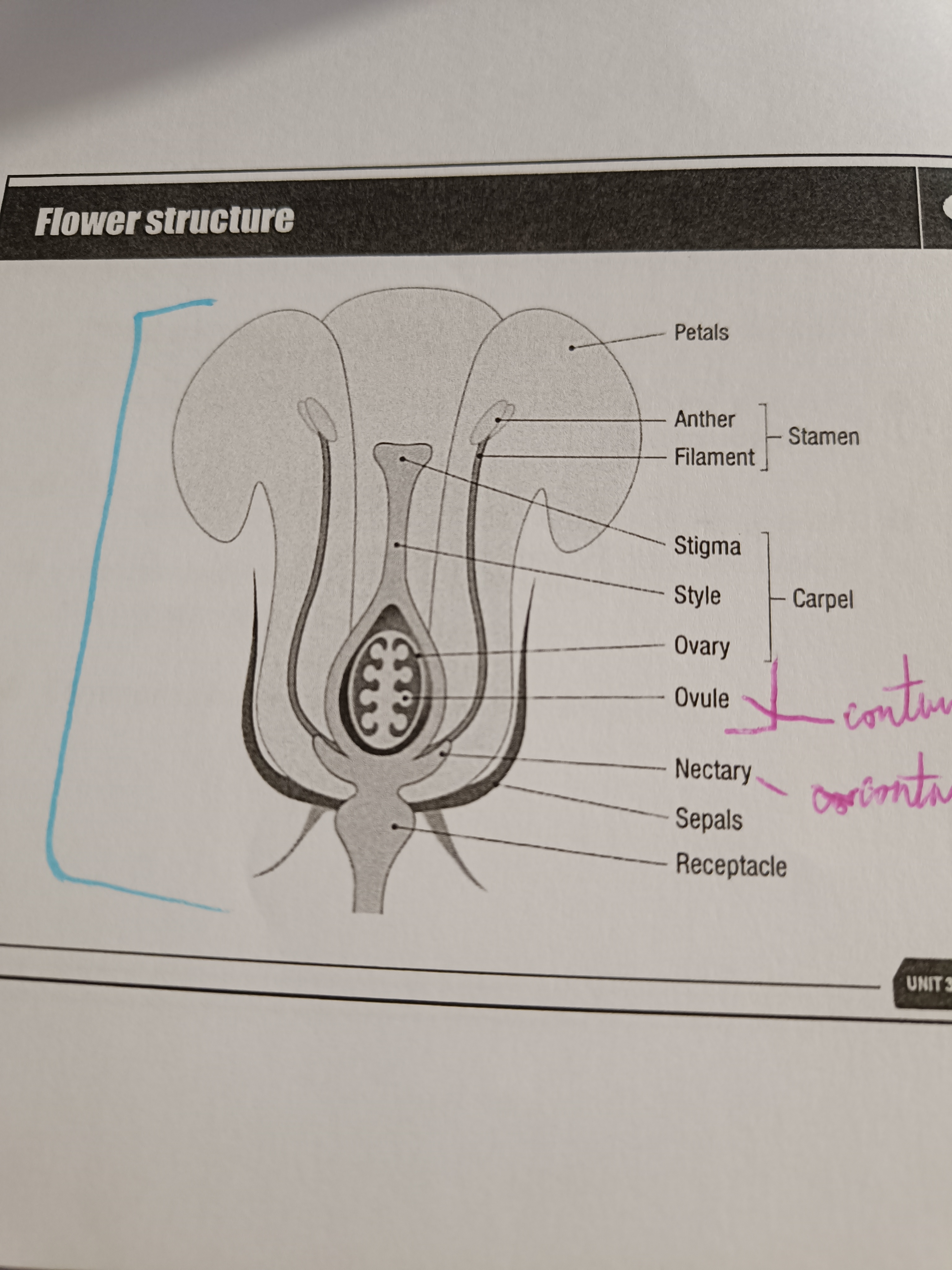
What does the ovule contain?
Female eggs
What does the nectary contain?
Sugary fluids to reward pollinators for dropping pollen in stigma
Function of sepals
Protect flower before it blooms
Function of petals
Attract animal pollinators
Stamen function
Male part of the flower
Function of anther
Produces pollen grains that produce male gametes
Filament function
Provides nutrients to anther
Carpel function
Female part of flower
Stigma function
Traps pollen
Where are female gametes produced?
Embryo sac in the ovule
Draw a diagram of an ovule in a carpel
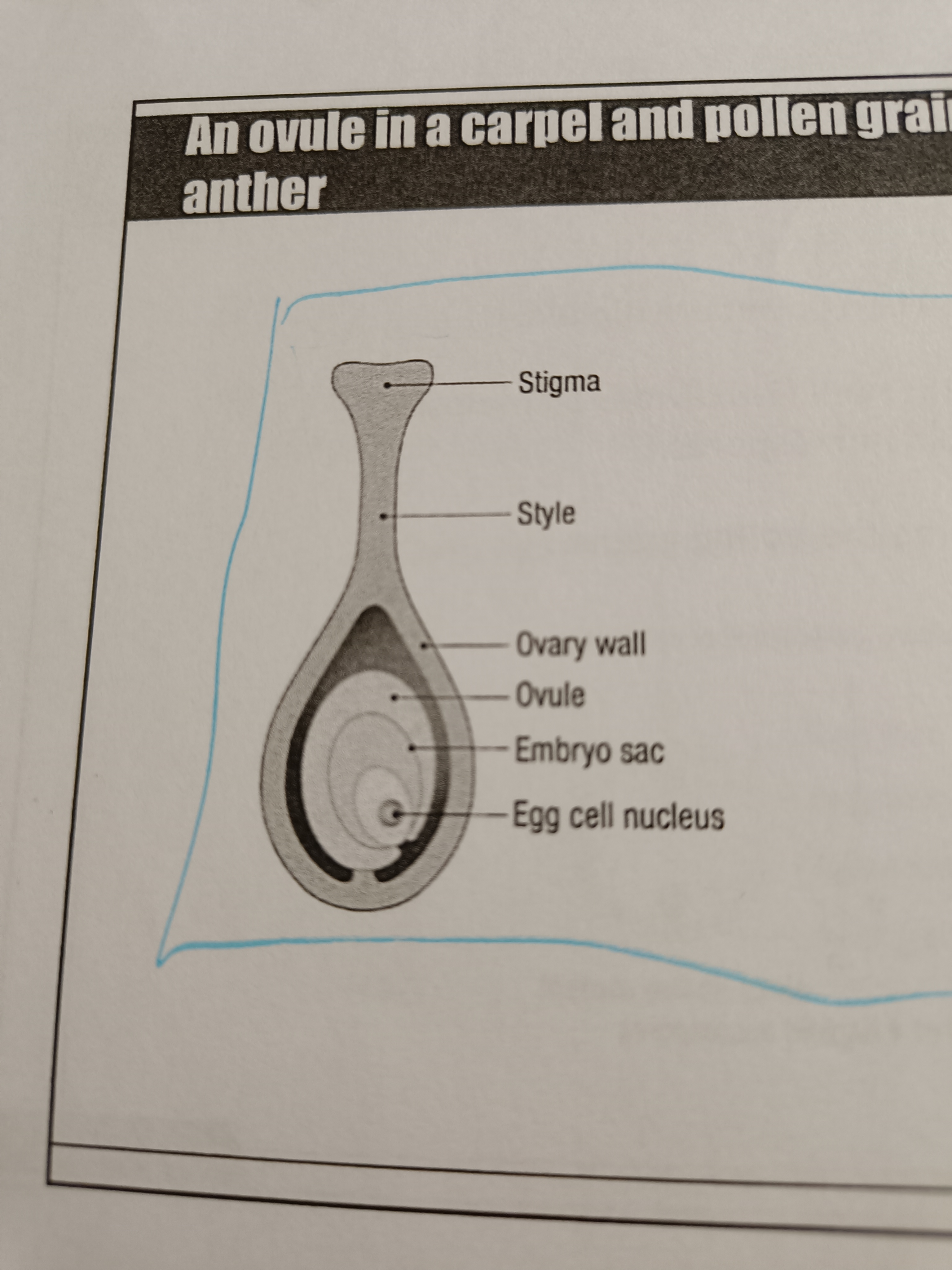
Draw a diagram of pollen grains in an anther
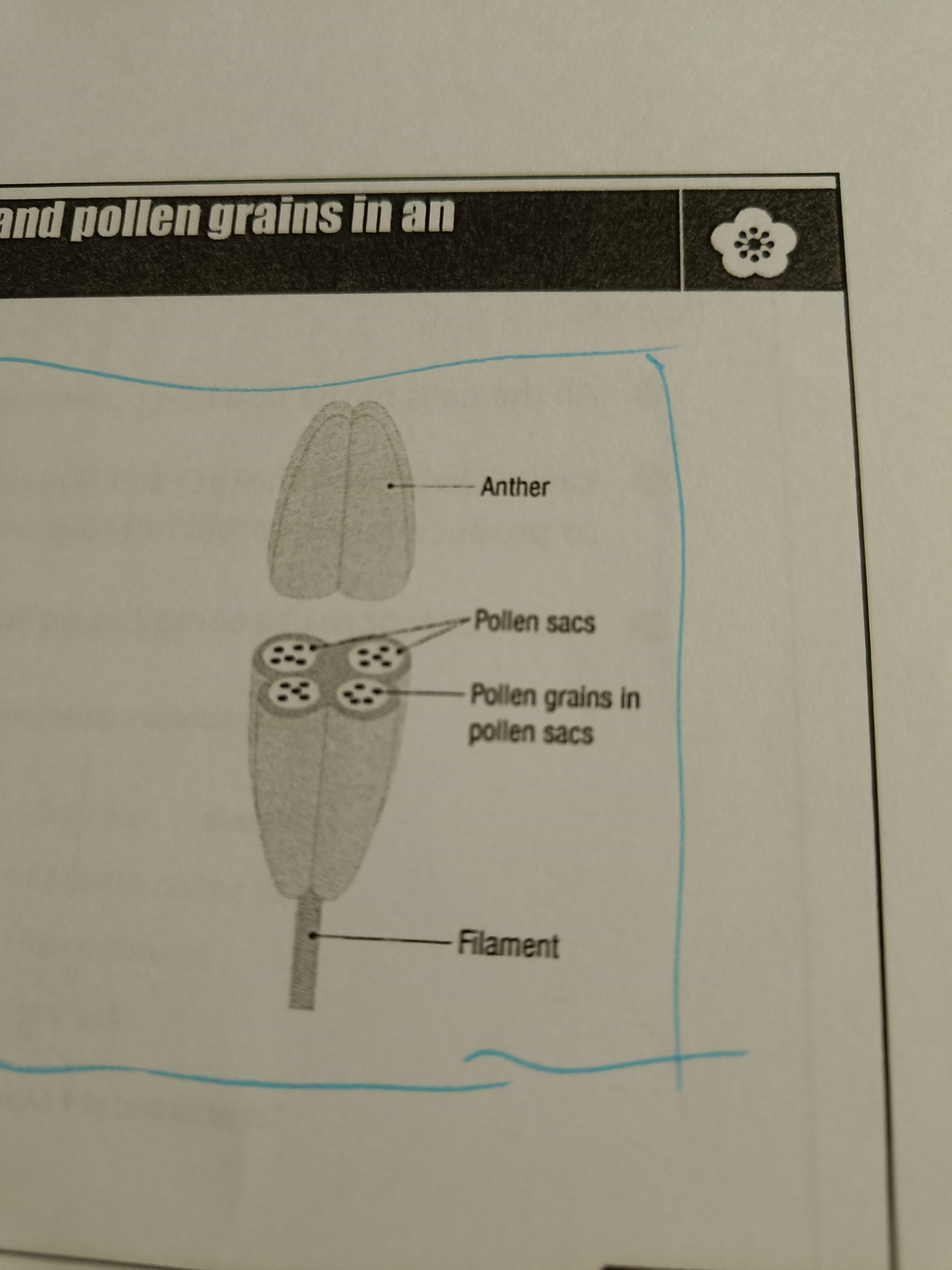
What does each anther contain?
Four pollen sacs
What does each pollen sac contain?
Diploid microspore mother cell (Pollen mother cell)
Function of the tapetum
Nourishes pollen cells
What happens to each microspore mother cell?
Divides by meiosis to produce four haploid cells which are the pollen grain
What happens to each pollen grain?
Divides by mitosis to produce 2 nuclei. One is the tube nucleus and the other is the generative nucleus
Function of tube nucleus
Forms pollen tube
Function of generative nucleus
Fuses with egg
After pollination what happens to the generative nucleus
Divides to produce two male gametes
What does each ovule contain?
Nucellus
What is inside the nucellus?
Embryo sac mother cell
What happens to the embryo sac mother cell
Divides by meiosis to produce 4 haploid cells. Three of the cells disintegrate
What is the remaining cell from the divided embryo sac mother cell called?
Embryo sac/ megaspore
What happens to the embryo sac?
Divides thrice to form 8 haploid nuclei
Functions of the nuclei produced by the megaspore?
One is the egg cell. Two polar nuclei. Others are useless
What will the wall of the ovule turn into?
Seed coat/ Testa
Cross-pollination (Definition)
Transfer of pollen from an anther of one flower to a stigma of a flower of a different plant of the same species
Benefit of cross-pollination
More variety than self-pollination
Benefit of more variety in plants
Better chance of survival and are more resistant to disease
Name 2 agents of pollination
Animals. Wind
How do animal-pollinated flowers attract animals (4)
Brightly coloured petals. Scent. Nectar (energy rich food). Pollen (protein rich food)
Features of wind pollinated flowers (4)
Stigmas feathery to trap large amounts of pollen. Do not have bright colours. Produce large amounts of pollen. Pollen is light to make it easier to carry
Draw a diagram of a wind-pollinated flower
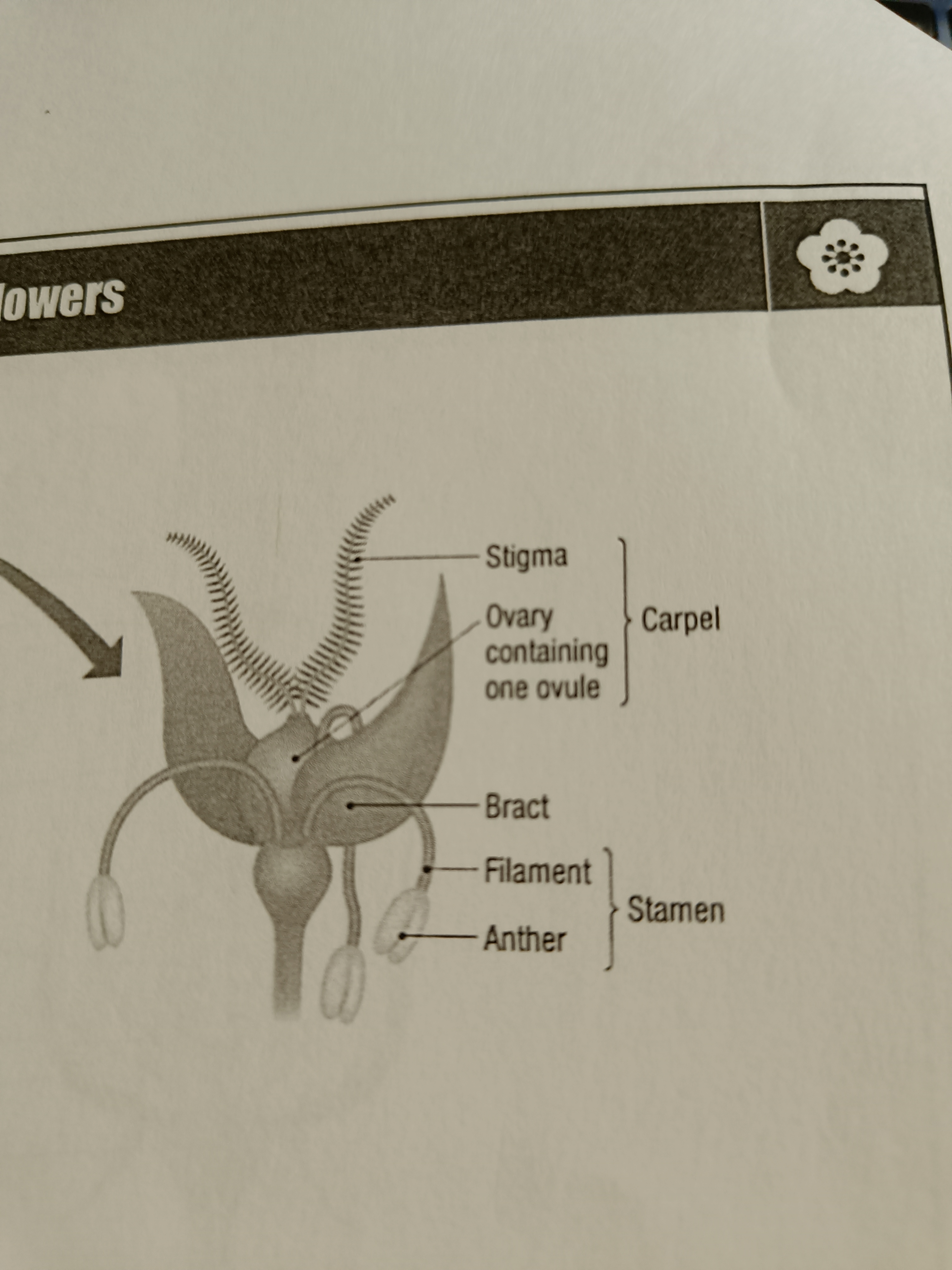
Between where does the pollen tube connect
Style to micropyle
What is the pollen tube attracted to?
Chemicals secreted by ovary and ovule
Draw a diagram of the events leading up to fertilisation
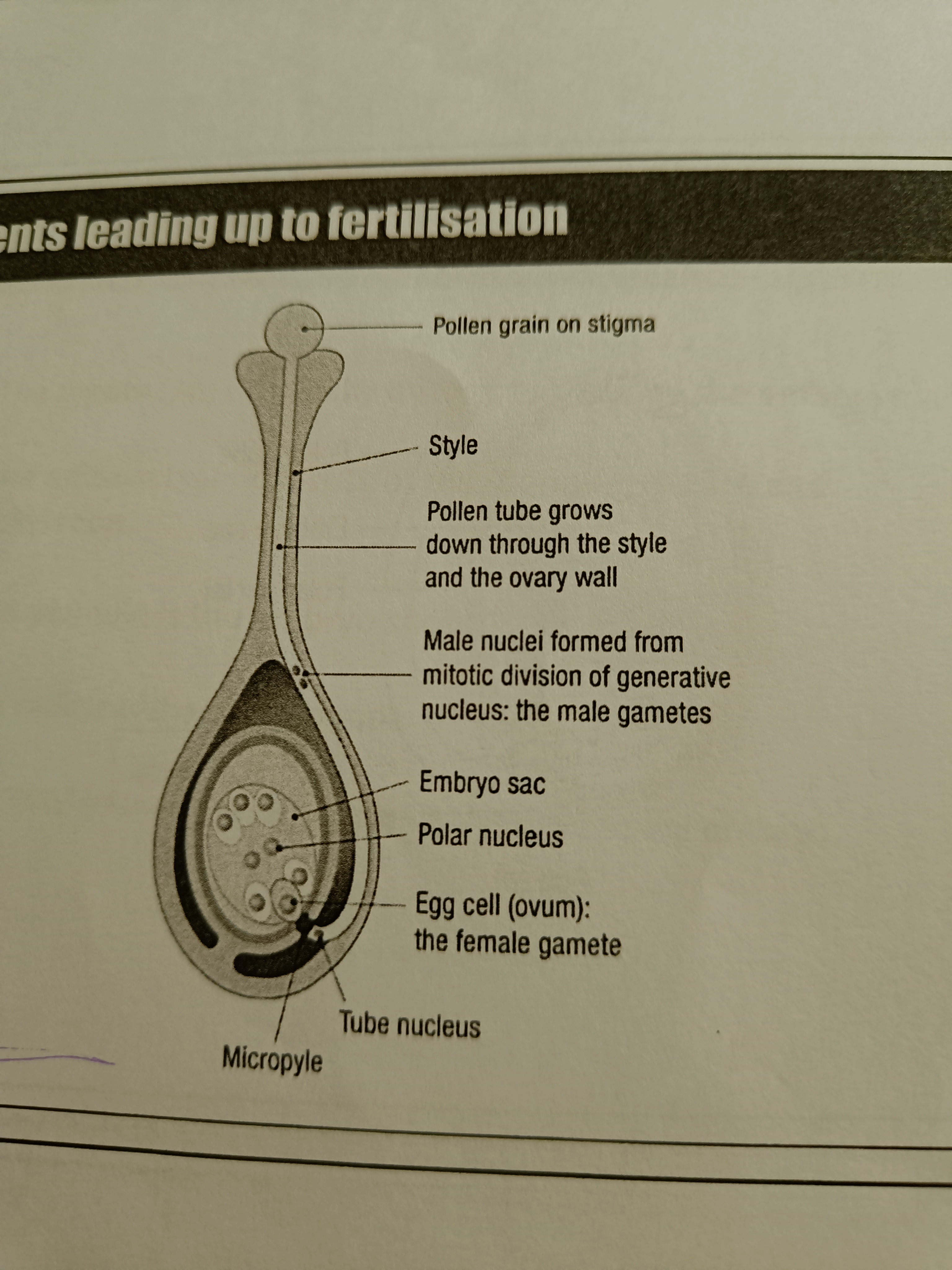
What happens to the two male gametes once they enter the ovule?
One fuses with egg cell to produce zygote. Other fuses with two polar nuclei to produce triploid endosperm nucleus
What does the zygote develop into?
Embryo plant
What does the endosperm develop into?
Food supply for developing embryo
What does the embryo plant consist of?
Plumule. Radicle. Cotyledon
What is the plumule?
Embryo shoot
What is the radicle?
Embryo root
What is the cotelydon?
Food supply for embryo
What does the seed release?
Auxins to cause fruit to form
What type of seeds are monocots classed as?
Endospermic seeds
Why are monocots endospermic?
Store food in endosperm
What type of seeds are dicots classed as?
Non-endospermic seeds
Why are dicots non-endospermic?
Dicots use up their endosperm before the seed is mature
Draw a non-endospermic seed
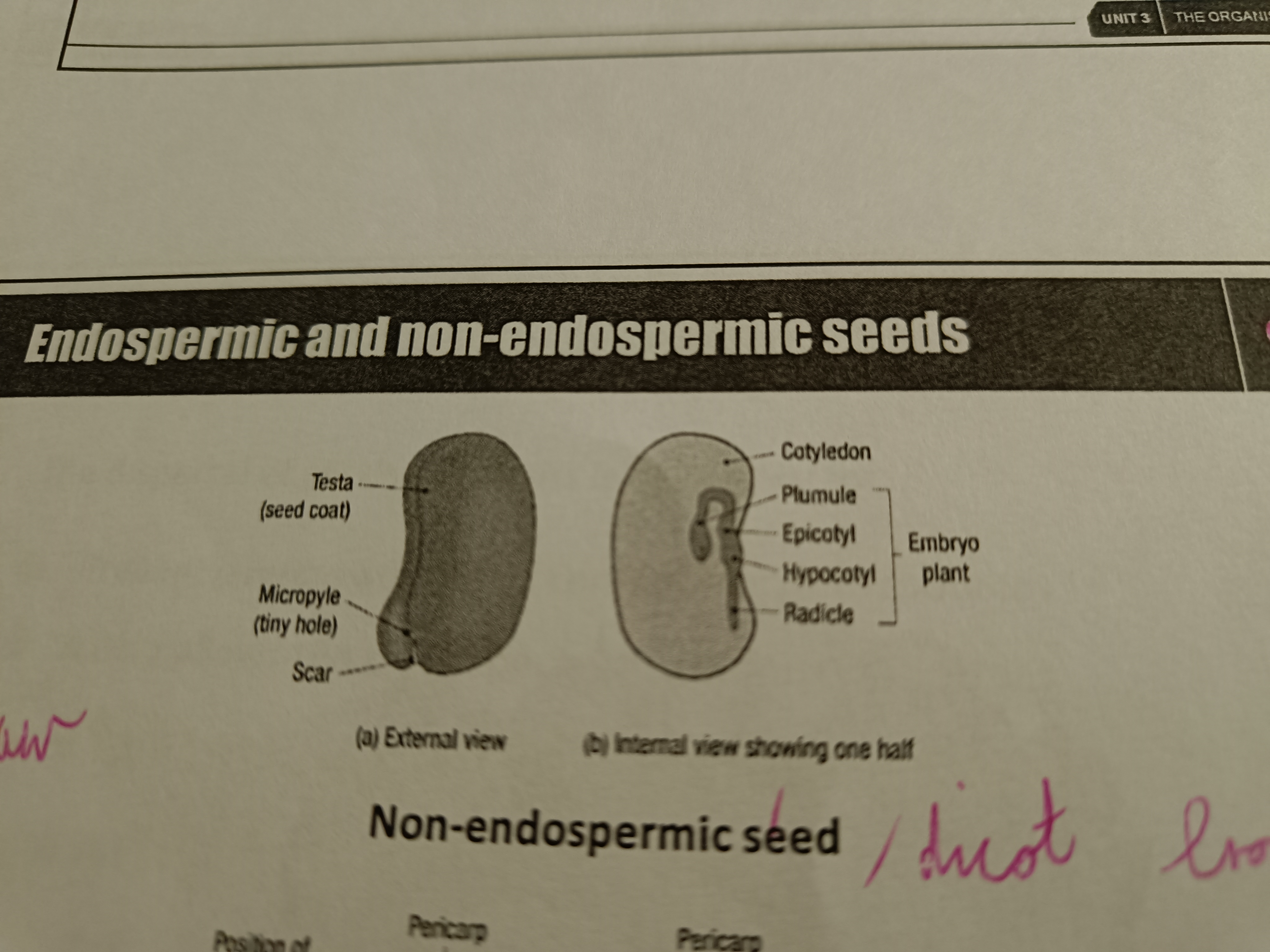
Draw an endospermic seed
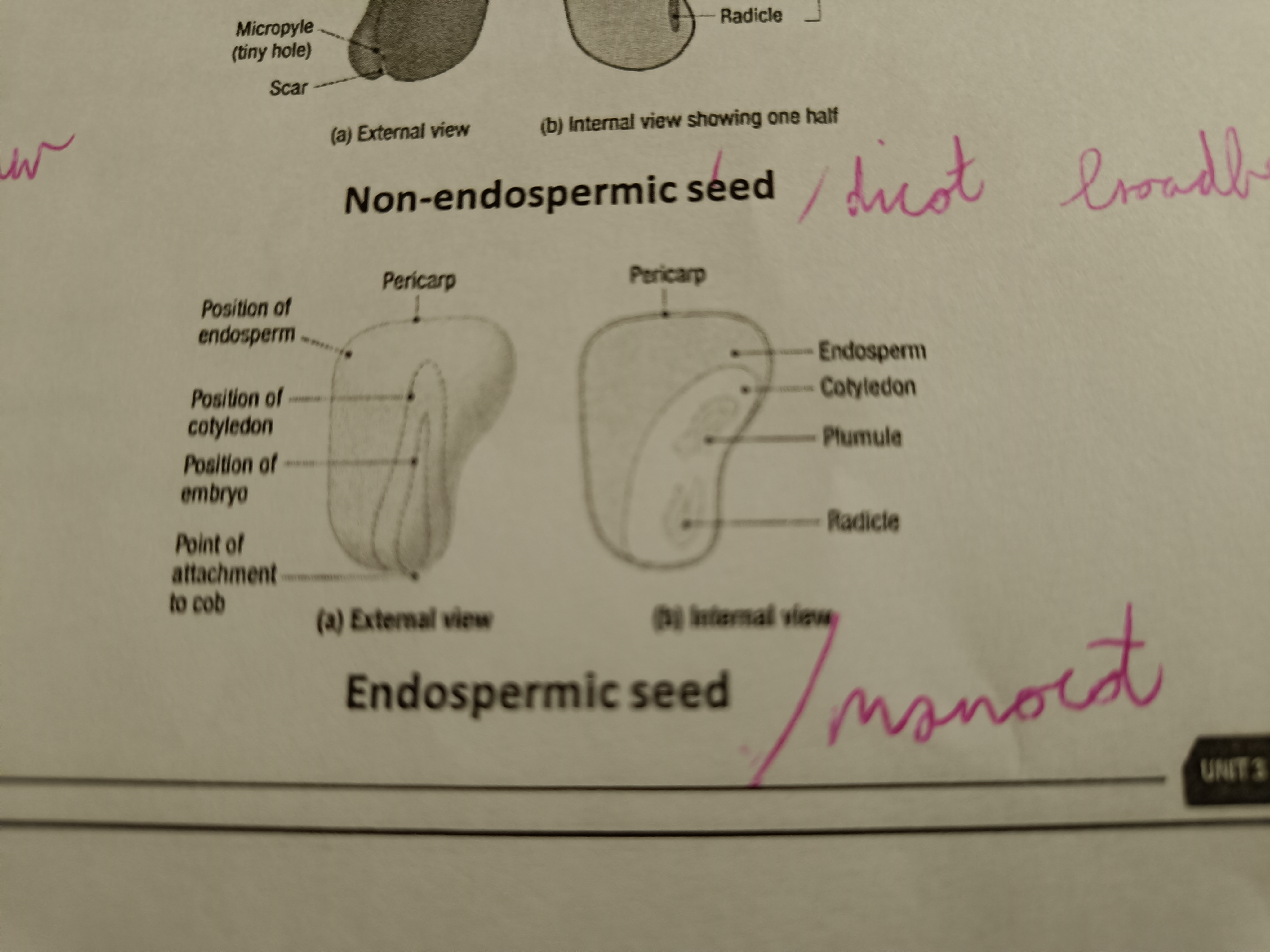
Functions of fruit (2)
Protect seed. Allow for seed dispersal
Benefits of seed dispersal (2)
Prevent competition. Allow plant species to colonise new areas
Four methods of seed dispersal
Wind. Water. Animals. Self-dispersal
Feature of seed/fruit to aid in dispersal (Wind)
Light and may be winged
Feature of seed/fruit to aid in dispersal (Water)
Air spaces/light to increase buoyancy
Feature of seed/fruit to aid in dispersal (Animals)
Sticky/tasty to stick to animal or get egested
Feature of seed/fruit to aid in dispersal (Self)
Pod to release seeds
Example of wind dispersed seed
Sycamore
Example of water dispersed seed
Water lillies
Example of animal dispersed seed
Raspberries
Example of self dispersed seed
Peas
Dormancy (Definition)
Period when a seed does not germinate despite favourable conditions being present
What are seeds that keep their ability to germinate called?
Viable
Advantages of dormancy (3)
Protection from adverse conditions. Allows for immature embryo of seeds to ripen. Allows more time for seeds to be dispersed
Advantages of dormancy for agriculture and horticulture (2)
Allows grower to provide optimal conditions. Allows grower to decide when to sow seeds
Germination (definition)
The regrowth of the embryo plant following a period of dormancy
Requirements for germination (3)
Water. Oxygen. Suitable temperature
Why does a suitable temperature need to be present for germination?
Affects enzymes which are dependent by temperature
What are the two main events that occur during germination?
Digestion of food stores. Respiration and cell division
Where do cotelydons remain during germination?
Below the soil
How does the plumule emerge during germination?
Hooked
Why does the plumule emerge hooked during germination?
Protection from adverse conditions. Allows for immature embryo of seeds to ripen. Allows more time for seeds to be dispersed
Explain Epigeal germination
Cotelydons more above soil and discards pericarp. Plumule emerges between cotelydons to form first two leaves